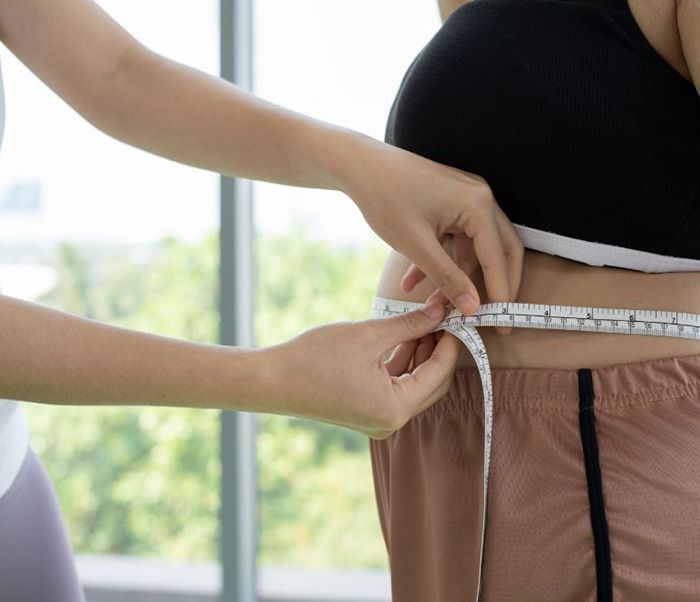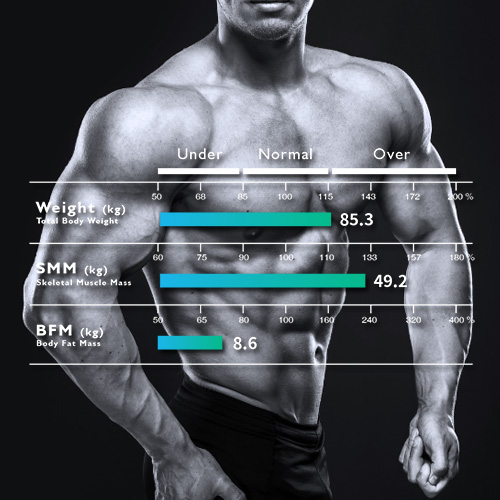How do you measure body composition?
There are multiple ways to estimate body composition. Which one is the "best"? Some are quick and inexpensive, but might only provide basic information. Others may be more accurate, but tend to be much more expensive and take a lot of time.
In this article, we provide a brief overview of several methods that are typically available to the general public or practitioner for assessment of body fat and other components of body composition.
Weight/Height

Body Mass Index (BMI) combines weight and height so weight can be normalized without worrying about height differences. BMI is typically divided into "low", "normal", "overfat", and "obese" categories. Because it's been used for a long time, there is a lot of national reference data that can be used to put results in context. However, because BMI doesn't distinguish between muscle and fat, it is less useful as an estimate of fat level, particularly for highly muscular individuals.
Waist-Hip Circumference

The circumference of the abdominal area (especially when compared to waist circumference) is used as an indicator of visceral fat around the internal organs (since more fat generally means a bigger waistline), which has a higher correlation with obesity-related diseases. It's an imperfect method partly because this measurement will also include subcutaneous fat underneath the skin, but it's still reasonably useful if other more precise tools are unavailable.
Skinfold Calipers

Skinfold calipers are one of the most technically simple ways to estimate body fat, operated by physically pinching the skin and subcutaneous fat underneath the skin in several specified locations (generally 3 to 7 sites) of the body and calculating the results based on the thickness. While the equipment itself is low-cost, it can be relatively impractical because of the need to take readings from multiple locations, plus the need for training to learn how to use the device correctly - when used by someone less experienced, results might be significantly less accurate.
Accuracy also tends to be limited to subjects that are thinner, or only moderately obese, as it becomes much more difficult to grasp and hold a large skinfold while reading the caliper dial. In addition, the majority of the national reference data may not take into account significantly larger individuals.
Body Density (Underwater Weighing, Air Displacement)

Underwater weighing is based on Archimedes' principle, in which the amount of liquid a submerged object displaces will be equivalent to the volume of the object. By measuring the weight of your body on land and then underwater, your body's density can thus be calculated. Fat is lighter than muscle and bone, so if your underwater weight is relatively heavy compared to your weight on land, that would be a sign of a lower body fat percentage.
A difficulty when it comes to underwater weighing (also called "hydrostatic weighing") is that because it requires complete submersion under water multiple times, it can be particularly difficult for children or obese subjects in particular.

As such, another very similar type of device is the Air Displacement Plethysmograph (ADP). Air displacement works under a very similar principle as underwater weighing (calculating using the amount of air displaced rather than water displaced), but without the need for the subject to hold their breath, it tends to be easier to use.
Dual Energy X-Ray Absorptiometry (DXA)

DXA uses X-rays to create a detailed image of the body, using algorithms to calculate bone density, muscle, fat and other body composition results. A typical whole-body scan takes about 15 minutes, and will expose the subject to a small dose of radiation. DXA is typically used as a "gold standard" comparison to BIA as it is relatively convenient to use compared to the above methods, and provides a wide number of measurement outputs.
Bioelectrical Impedance Analysis (BIA)

BIA devices like the Charder MA801 Body Composition Analyzer (pictured) send an imperceptible electrical current through the body to measure the body's bioelectrical impedance, calculating body composition results accordingly. The basic principle is that you will see different impedance results for different types of body tissue, due to conductivity. For example, fat is a relatively poor conductor of electricity compared to muscle (which is high in water content), so a BIA device can distinguish between the two. Accuracy can vary significantly depending on the brand, so validation by comparing with gold standards, and constant research and improvement of algorithms is crucial. Measurement results can be received in less than a minute, and there are no side effects.
As you can see from the different methods listed above, there is no single "best" tool when it comes to evaluation of body composition. The most suitable solution will depend upon your budget, needs, level of precision required, and other considerations.




